It is difficult for a beginner gardener to understand all the intricacies of care. In some species, only the tops of shoots and dried inflorescences can be cut, in others, most of the shoot, leaving a few buds. Knowing how pruning hydrangea is carried out, you can form a beautiful plant with large inflorescences.
Material Content:
Hydrangea pruning dates in spring
Spring pruning of hydrangea is carried out when the kidneys swell. At this time, the direction of growth of the new branches is visible, which allows you to trim correctly. Until the moment when the living kidneys become clearly visible, it is impossible to trim.

However, delaying the start of the procedure is also not worth it.
If you cut the shrub too late, it will not have time to bloom at the right time and prepare, as it should, for the winter.
Pruning begins with treelike hydrangeas, panicled more patient. And large-leaved species that bloom on last year's shoots are pruned in the spring as early as possible, guided by completely different principles.
When to prune flowers in the fall
Adult hydrangea is trimmed in the fall every year. This is done after the leaves fall in the garden, and the lush fragrant caps of inflorescences turn into a brown herbarium.

- They begin to cut small branches that will not give good flowers or go deep into the crown.
- Then skeletal branches are shortened to the desired length, inflorescences are cut off.
If the autumn pruning is done correctly, in the spring the bush will not have to be formed. It will only be possible to cut off the ends of shoots damaged by frost.
Hydrangea pruning diagrams and step-by-step instructions
Pruning of flowering shrubs is an important stage in care, without which it is impossible to obtain large beautiful inflorescences. The pruning rules for different types of hydrangeas are different.
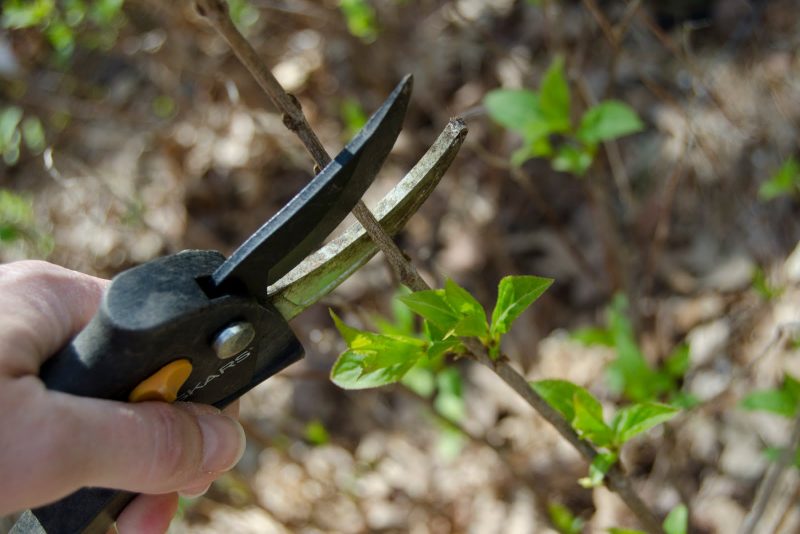
Step-by-step instructions for trimming panicle and tree hydrangea:
- They begin to cut small branches, dried, broken, frost-bitten in winter, damaged by diseases or pests.
- Stimulating the growth of powerful shoots with large inflorescences, all side branches are cut over 2 pairs of buds, leaving a margin of several centimeters.
- Thinning and forming a crown, cut off all the shoots that make the bush too dense. These are weak shoots that will not bloom, and growing inside the bush.
- For rejuvenation, several strong shoots are left on the bush annually, removing thin young and too old (4-year-old) branches. They are cut to the ground.
Trimming hydrangea tree and paniculata is quite low, in order to obtain abundant flowering.
Large-leaved hydrangea blooms on the shoots of last year, if pruned, it will not bloom.
She is afraid of frost, so she needs to be well covered for the winter. This hydrangea does not tolerate even the first frosts. She cut off the very top of the shoot with a withered inflorescence, without touching the branches with buds.
Hydrangea can be formed in the form of a bush or tree. In hydrangea panicled kidneys on the lower part of the trunk at the age of 4 do not wake up. This allows you to form a plant in the form of a standard tree.
Tree pruning scheme:
- In the spring of a 2-year-old seedling, one upright shoot is chosen, which will be the trunk, all other shoots are cut off from the ground. Tie him to a support.
- In the summer, pinch the side shoots. They are not cut out, as they serve to form the trunk as food.
- For 2 years in the spring, side branches are cut.
- At a height of up to 0.5 or 1.5 m, the top of the tree is cut, laying the beginning of its branching.
- From the shoots of last year form a crown.
- Further pruning consists of cutting into 2 - 3 buds of skeletal branches annually and forming the desired crown.
Growing a plant of the desired shape takes several years, and then only thinning and sanitary pruning is carried out. When forming hydrangeas in the form of a bush, several stems are left.
Spring pruning
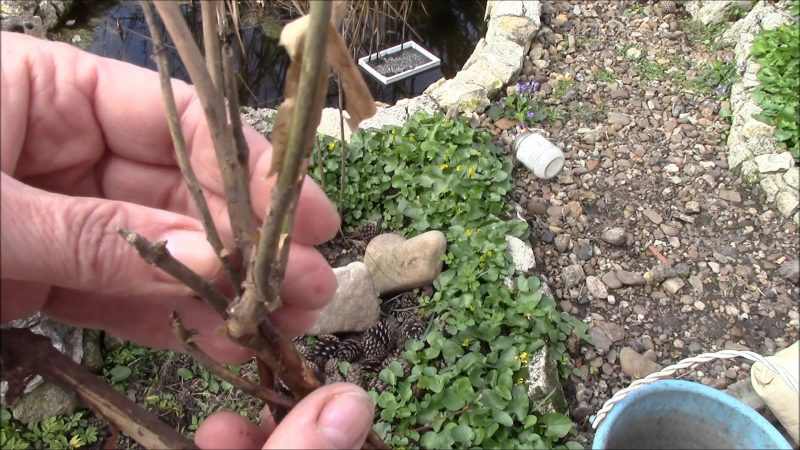
Sanitary pruning of hydrangeas in the spring allows you to remove all frozen and broken branches.
To stimulate the growth of new flowering shoots, cut last year's branches above the third or fourth bud from the surface of the earth or from the main trunk.
Pruning flower in autumn
The crown is aligned in height at the same level. All weak branches are cut, the side shoots are shortened, leaving 2 or 3 pairs of buds.

Dried inflorescences are cut, leaving 3 buds at the base of the shoots. Cut all weak branches, giving priority to shoots with strong buds, remove all weak shoots.
Hydrangea care after circumcision
In order for the new shoots to grow powerful, the plant needs fertilizing and watering. Top dressing is applied to moist soil. A complete mineral fertilizer containing nitrogen, potassium, phosphorus and trace elements is used.
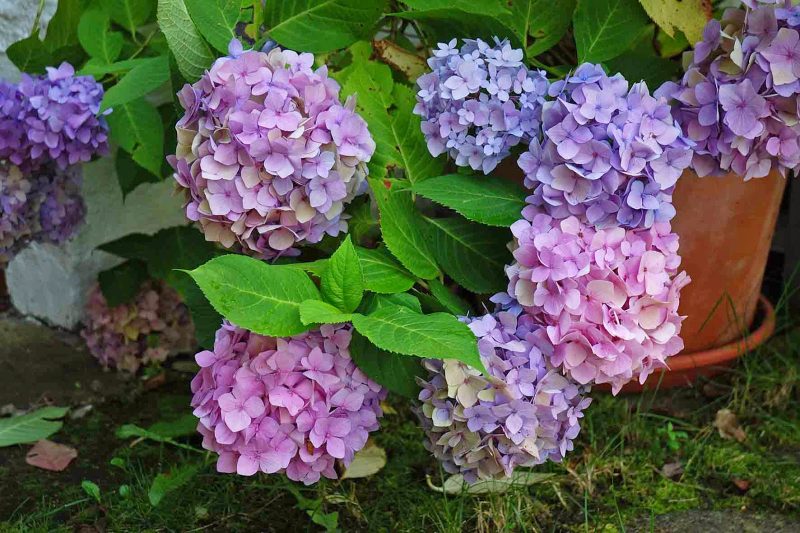
The trunk circle is mulched with peat, compost or manure, with a layer of 5 cm or more.
This will provide additional nutrition for the plant and protect against the formation of a dry crust after watering.
Common Errors When Trimming
In the first two years, hydrangea grown from cuttings does not need to be trimmed. It should gain strength, due to the green mass of leaves, the roots and shoots are developing.
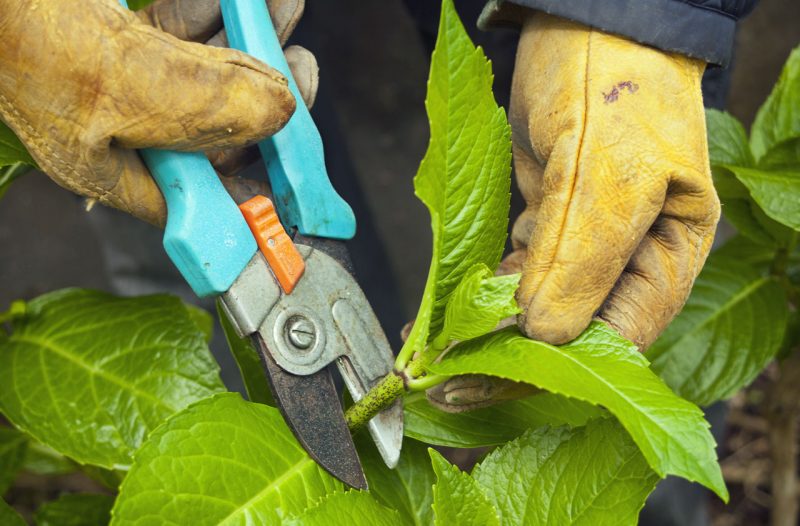
It is impossible to make a cut very close to the kidneys, they can dry out.
It is necessary to leave a stump of a few centimeters, subsequently, when it dries, it can be carefully cut.
Advantages and disadvantages of spring and autumn pruning
Spring pruning of panicle and tree hydrangea allows you to select and leave the strongest buds on the shoot.
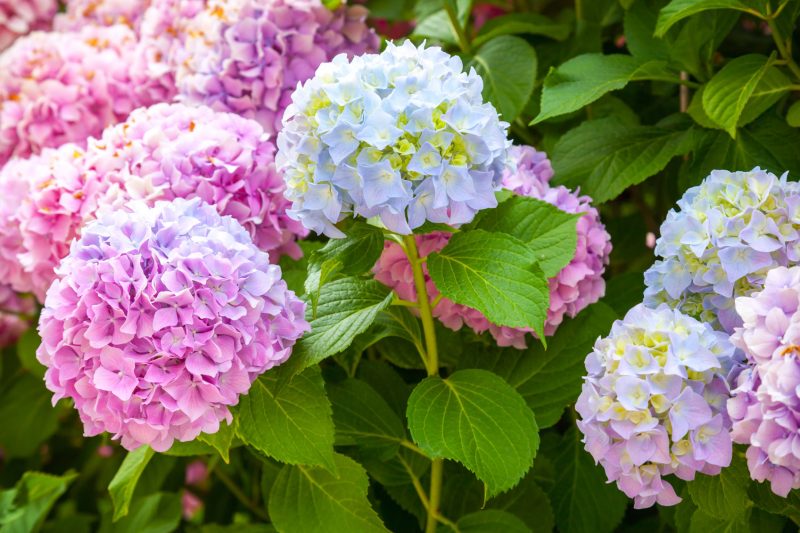
Autumn pruning also has two advantages:
- There is always a lot of trouble in the spring on the garden plot and in the garden, in autumn there is more free time - this is the first advantage of autumn pruning.
- Trimming hydrangea in the fall is convenient because it is at rest. In place of the slices there will be no abundant release of juice, which can weaken the shrub if a little late with pruning.
If you grow hydrangea without pruning, the inflorescences will eventually be very small. Therefore, one should not be afraid to try various methods of forming a bush, not forgetting about the features of various types of hydrangeas.












